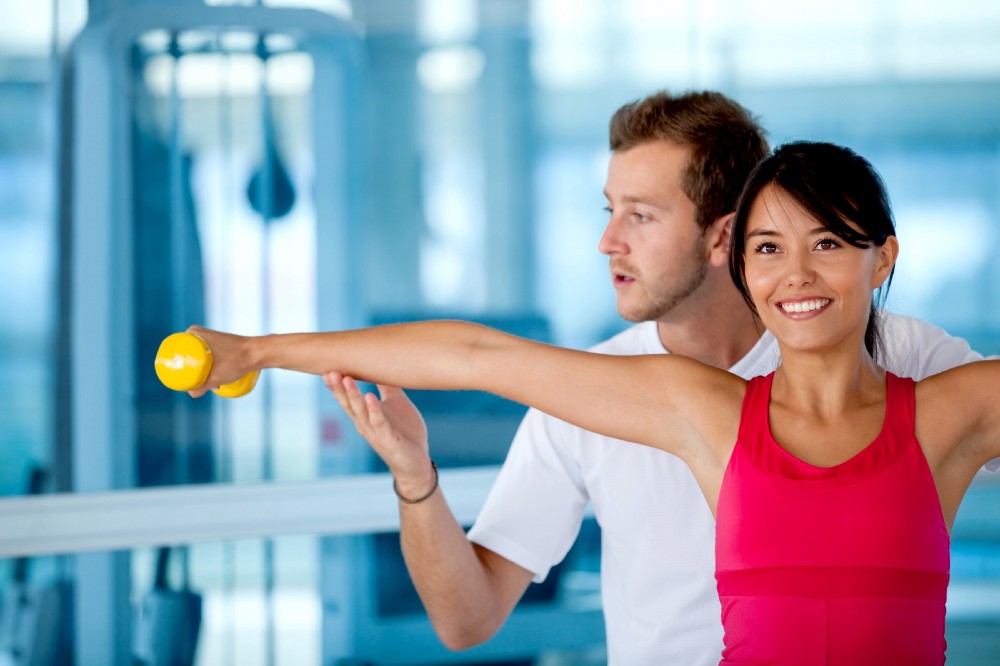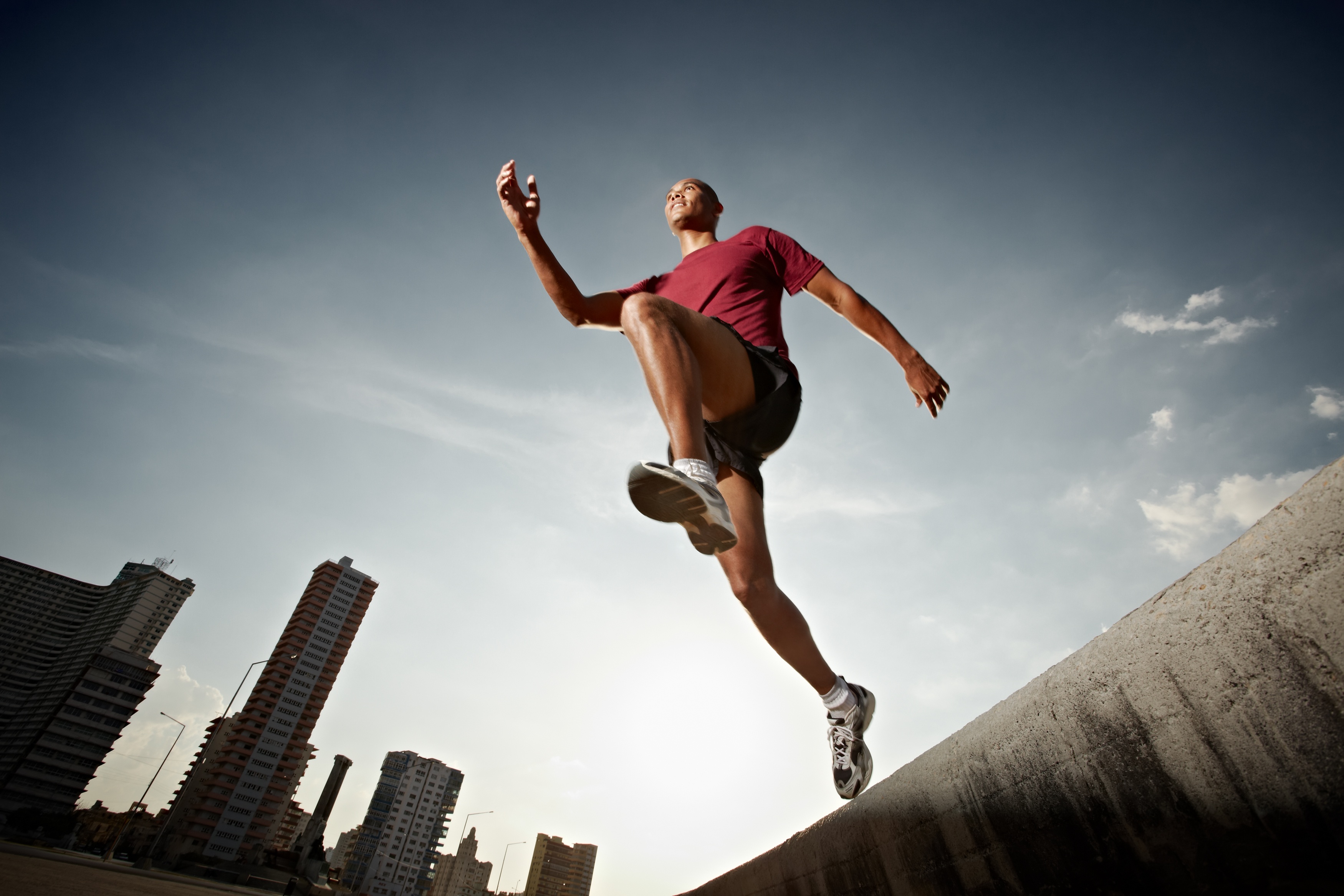March 2018 NewsBlast | Article 3
28 Mar 2018 / joeHow Trainers Touch Lives
By Tammy LeBoss | thefitprofoodie.com
3 Transformative Tips on Assisting | 1 Empowering Pro Tip

It’s a touchy subject when it comes to touching other people.
As fitness professionals, we’re in the business of empowering others through human connection. As personal trainers and coaches, we get to use assists to help students maximize their workouts. Why assist? Every assist, whether verbal, visual, tactile or proprioceptive—is a form of communication that can speak a world of information. This is true whether in a one-on-one or a group class setting. But if done poorly and the proper signals are not getting across, this can be damaging to the trainer-client relationship.
For trainers new and experienced, offering an assist during a workout can be an invaluable experience. It can be a great opportunity to learn more about the body and its strengths and limitations, while also encouraging proper alignment. Remember that before making a decision to actually touch a client, you must first get comfortable with the act of touching others. If you are not, they will feel this, which could become an awkward experience.
A simple touch can ignite courage from within.
The right assist can truly help the student to fully work toward their greatest potential. Whether this takes place in group or a private training session, a subtle touch or cue could make the biggest difference. A small shift can ignite courage that did not exist before.
Pro Tip:
It is not the trainer’s job to ‘fix’ the student. Rather, it’s better to give them the guidance that may help the individual to feel, to fully experience each movement. By behaving as a facilitator in this way, we encourage them to take responsibility for their actions; the client gets to take credit for their work— not pass the responsibility to the trainer. This empowers the client or student.
When is it appropriate to touch?
When is it appropriate to touch? Every student will respond differently to being touched. Although some students will respond well to a gentle assist, others may view it as an invasion of personal space. Some shouldn’t be touched at all, and in time those students will let you know who they are. Beginners, in particular, must not be harped on about ‘proper form’ as the pressure to ‘perform’ could be too much. Trainers need to develop a keen eye, and learn what each client’s specific needs are. The type of assistance needed could also vary day to day. Here are 3 ways to tune-in to proper touch:
- Listen to the student’s needs prior to making the decision to touch. When in doubt on when it’s appropriate, it’s always a good idea to ask for permission. This will apply when the relationship is between a male to a female, particularly when the trainer is the male. Remember that a spirit of playfulness can be fun, but if in doubt refrain from making or inviting any comments that may later prove to be offensive.
- When assisting, notice the difference between the use of fingertips for support, compared to the use of a full hand that could be interpreted as intrusive. Remember, assists should always be with respect, compassion and specific to the individual. Using fingertips for tactile assists rather than the full hand is less invasive and yet serves as effective neuromuscular feedback. Try this when assisting a client who’s doing a pull-up; many clients will struggle to draw their shoulder blades down towards the waist without poking the ribs out. By placing the fingertips at the tips of the shoulder blades, applying gentle yet firm upward pressure, can truly transform a pull-up!
- When touching or assisting anyone, always be solid in your own body and in your own intentions. Fine-tune your assists and make it a fun, creative process to cultivate over time. Use your special touch as an opportunity for teaching others about connection with their bodies.
Applying the right touch ameliorates connection and support. This builds trust. When trust grows, so does client retention. And moreover, human connection. If you truly want to transform lives and make a difference, use the power of your touch; and know that you can never go wrong when acting from a place of service.
February 2017 NewsBlast | Article 4
20 Feb 2017 / NAFCNAFC NewsBlast - February 2017 | Ed 4
1 Training Hack You May Have Overlooked
By Tammy LeBoss | thefitprofoodie.com

Our ability to lose weight or to gain lean body mass does not happen in the gym
In fact, those hard-earned gains will take place outside the gym, during sleep. Research shows sleep or lack thereof affects recovery, detoxification, metabolism, and our psychological well-being.
But, do you find you’re moody and not sleeping?
Our bodies need to properly heal and recover in order to grow. Are you giving your body adequate recovery and healing time? When we’re not getting proper sleep, we miss out on optimizing of all of the hard work from our strength-training regimen. If you struggle with getting adequate sleep like millions of Americans, there is one factor you may consider: You may not be fueling the body with adequate carbohydrates. Remember that carbohydrates provide necessary fuel for your muscles and your brain. So removing or limiting them will surely put undue stress on the body and leave the mind ill-prepared for your next workout. Remember that carbs also produce higher levels of serotonin, the body’s ‘happy hormone,’ which is released by the body to promote good mood and better sleep. Serotonin is also a neurotransmitter that gives us the sense of being full after a meal.
While proponents of the low-carb Atkins diet may argue the diet’s benefits,
science has proven that without carbohydrates the thyroid glands and thus, our metabolism are negatively impacted. This also increases cortisol levels as well as the likelihood of depression. When avoiding ‘bad’ carbohydrates, limit or avoid the processed stuff that carries with it a long shelf life. Generally speaking, foods that are stored in boxes with a long shelf life are bad for us. Limiting carbs should not be about dropping body fat nor weight loss. It should be a choice for a healthier lifestyle, and therefore, enjoyed by the body as well as the mind. Remind yourself of the overall end goal: To obtain a balanced diet minus the unbalanced mood swings. For your next workout, rather than pump it up with sports drinks, pump it up with good quality complex carbs such as brown rice, potatoes, yams, and gluten-free oats. Don’t beat yourself up for enjoying a serving size of slow carbs at dinnertime, or even bedtime. And remember, for the greatest nutrient absorption combine this with balanced portions of protein and good fats. Enjoy your food, improve your mood and allow both the body and the mind to heal, without the unnecessary guilt.
Pro Tip for Deep Sleep:
Learn to control your nervous system. Turn off your flight-or-flight mechanism (sympathetic nervous system), and turn on your para-sympathetic nervous response. Don’t worry, you don’t have to be Buddha-like to achieve this. Start by taking 8-10 cycles of full, conscious breaths. Set the right mood. Do this before bedtime and then again upon waking up, and notice the difference.
Lack of sleep can cause hunger, cravings, blood sugar problems, diabetes and thus, weight gain. Learn more about the importance of sleep, performance and recovery in NAFC’s Nutrition Coach course. In the meantime, try these 8 sleep hacks according to Dr. Mark Hyman: https://youtu.be/eJzxciAB5gg always continue learning (get your CEC’s), and you’ll enjoy big gains outside the gym.
February 2017 NewsBlast | Article 1
01 Feb 2017 / NAFCNAFC NewsBlast - February 2017 | Article 1
One Way to Test for a Strong Core
By Tammy LeBoss | thefitprofoodie.com

Jumpstart the New Year with Power Rebounder™
Did you know that in sports, the vertical jump is one of the most explosive physical movements execute? In a number of sports, the higher the athlete is able to jump, the greater the prospects of success. For example, basketball and volleyball are the two sports in which one’s ability to jump is an indicator of overall athletic ability. The National Football League requires every player to be tested for both vertical leaps and sprints, irrespective of the position played.
For many athletes, learning to push the boundaries of jumping can be a game-changer. The vertical jump is defined as the highest point that the athlete can touch from a standing jump. This type of jumping activity can be developed and improved upon in the Power Rebounder™ experience. But, who should exercise rebounding?
The NAFC PowerCert™ was designed to be friendly and accessible for all fitness levels. By understanding and applying the safety principals of ANSER™, along with the PUSH™ principles of Power Rebounder, any ‘body’ can take their training to new heights. The benefits of Power Rebounder go beyond the fun beats of this music-driven program. Participation in rebounding activities has been scientifically proven to improve/accelerate physical detoxing.
Scientists and lymphologists encourage rebounding as a way to activate detoxification.
According to Dave Scrivens, Certified Lymphologist at UCSD explains:
“The body has a built-in need for activation. The lymph system, for example, bathes every cell, carrying nutrients to the cell and waste products away. Yet the lymph is totally dependent on physical exercise to move.”
Learn more about how vigorous exercise such as rebounding can increase lymph flow by 15 to 30 times.
The Primary Muscles Involved in Rebounding include Glutes, Legs and the Core.
In order to push to new heights, it’s necessary to understand the how’s and why’s a strong jump involves a combination of leg strength and explosive power. Secondly, the degree to how high a person can jump will be determined to a degree by the distribution of fast-twitch versus slow-twitch fibers present in the muscles of the legs. Lastly, a strong connection to core will also affect a graceful and safe landing. Try this pro tip for a proper landing:
To Land on your feet like a cat you would:
Concentrate on the mechanics of the jumping, directing propulsion from the balls of the feet and thrusting with an explosive extension of the legs, the ability of the athlete to land lightly and immediately return to the floor enhances motor control over the movement. Oh and don’t forget to bend the knees prior to executing that jump.
The Key:
One’s ability to land lightly onto their feet is affected by how strong the core musculature is. It is for this reason that both instructor and participants should understand the muscles that make up the core.
Whether you’re a trainer to athletes wanting to improve jumping power, or to Baby Boomers who need to work on balance and proprioception, learn more about Power Rebounder™. Jumpstart the New Year taking your training skills to new heights. Through this NAFC PowerCert™ you’ll learn to PUSH™ the boundaries safely and effectively, jumpstart stubborn metabolism, and enjoy the many benefits of jumping the smart way.
1 2 3 4

